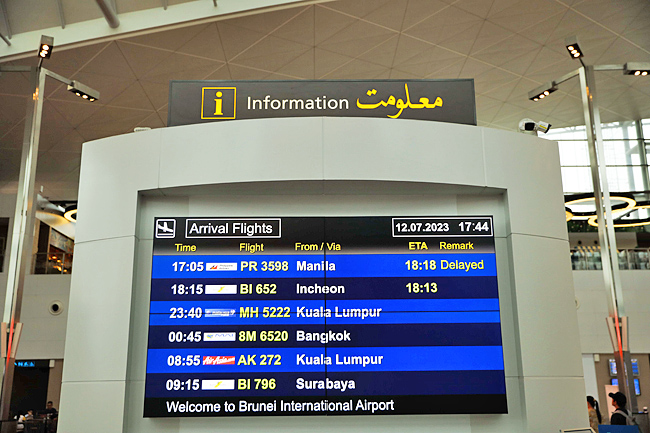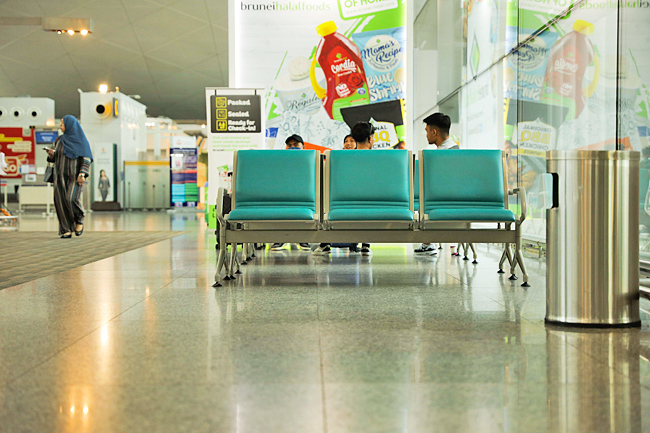THE WASHINGTON POST – Travel is littered with forks in the road, and here’s another one: You learn that your flight is delayed while you’re still at home. Do you get comfortable and make yourself a sandwich, or stick to your original timeline and head to the airport?
“Be very careful about what you choose to do,” said a travel analyst with Atmosphere Research Group Henry Harteveldt. “Ultimately, the airline is not responsible for making sure you’re on the plane. That’s up to you. When departure time comes, that plane is going to leave.”
Delays occur for a slew of reasons, such as treacherous weather, aviation traffic, mechanical issues, labour disputes, crew scheduling or interloping animals on the runway.
The airline’s operations control centre, which acts like a nerve centre for passenger aircraft, weighs a multitude of factors before declaring a new departure time. Airlines strive to make this figure as precise as possible, to avoid upending the entire day’s schedule and upsetting passengers.
“It kind of makes you look dumb if you say the flight is delayed by an hour and then you say it’s actually 15 minutes late. It erodes a lot of trust from a passenger,” said Vice President of Planning and Revenue at Breeze Airways Max Barrus. “Typically, if you’re going to post a delay, you’re going to stick with it.”
But not always. Airlines may shorten or lengthen the amount of time if the problem improves or worsens. Both scenarios can add a wrinkle to your schedule.



“Flight delays can be uncertain and, depending on the reason for the delay, flights can on occasion depart earlier than the original delay estimate,” said Chief Executive of AirHelp Tomasz Pawliszyn, an online service that helps passengers obtain compensation. “In these cases, you wouldn’t want to stay home an extra hour to wind up missing the flight.”
Understanding the forces behind the delay can help you find the sweet spot between twiddling your thumbs at the gate and scrambling to the airport in a panic.
THE LENGTH OF THE DELAY MATTERS
When deciding whether to depart for the airport or dawdle at home, first consider the length of the delay. (Department of Transportation defines a delay as an arrival or departure that is at least 15 minutes past its scheduled time. From January through March, 21 per cent of flights were late.)
If the delay is less than an hour, proceed to the airport as planned. For two hours or less, spokeswoman for the American Society of Travel Advisors Erika Richter errs on the side of caution and suggests arriving in time for your previously scheduled departure.
“Airlines try to work quickly to resolve delays, and it’s quite possible your flight could leave earlier if the issue is resolved,” she said.
For longer delays, you can safely reschedule your Uber ride to the airport, as long as a few other factors align.
Airlines are not required by law to compensate passengers for “significant delays” within their control and handle each situation on a case-by-case basis.
The Biden administration recently proposed new rules that aim to protect airline customers inconvenienced by flight disruptions.
Last year, the agency created a dashboard that lists the provisions United States airlines offer passengers in the event of a delay or cancellation. For example, all 10 carriers will provide a meal in some form when the delay is three hours or longer. None distribute cash compensation.
SIGN UP FOR NOTIFICATIONS
According to the Department of Transportation, as soon as an airline becomes aware of a flight change, it has 30 minutes to share the updated information with its passengers.
At the very least, the carrier must provide the new details on its website and customer service phone line, if it still has one. In addition, for delays of at least a half-hour, the airline has 30 minutes to amend its flight status sources and displays.
To stay abreast of time adjustments, sign up for the airline’s notifications. Carriers may contact you by phone, text, email or through their app. Southwest, for one, urges travellers to check their flight status on its mobile app or website.
“We also proactively deliver notifications to customers via e-mail, text or automated call when a flight time changes, so they can make informed decisions,” said a Southwest spokesperson Laura Swift.
Flight tracking sites such as FlightAware and Flightradar24 provide real-time information, including the whereabouts of your plane.
PINPOINT YOUR AIRCRAFT
“If your jet is parked at the gate, you can know the night before if it is going to leave on time, barring any mechanical issues,” said a FlightAware spokesperson Kathleen Bangs, referring to an early morning flight.
By following your aircraft’s journey, you will be better informed about the delay and it’s chances of sticking. Use this information to plot your own departure to the airport. If your plane is several airports behind schedule – for example, it must make a few stops before arriving at your departure point – you have more time. If it’s en route or landing, don’t dillydally.
“If the aircraft is at the airport or is expected to arrive soon or within a stated time, you need to be very careful about delaying your departure for the airport,” Harteveldt said. “The airline is always going to do whatever it can to make up for lost time.”
LARGER AIRPORTS HAVE MORE FLEXIBILITY
At larger facilities and hubs, such as Atlanta Hartsfield, Chicago O’Hare and Dallas-Fort Worth, airlines have a deeper pool of aircraft and personnel than smaller or secondary airports.
This allows the airline greater flexibility to formulate an alternate plan.
For instance, a carrier at a major airport can replace a plane with a mechanical issue with one in good health. If the issue is staffing, the airline might have reserve crew members who can fill in for colleagues who are stranded in another location or whose shift hours have expired.
For the safety of passengers and crew members, pilots and flight attendants cannot exceed the number of work hours prescribed by the Federal Aviation Administration.
“If you’re flying into Houston on United, for example, they have all sorts of resources there,” Barrus said. “You’re probably less likely to see really big delays unless there’s a cascading effect.”
INVESTIGATE THE REASON FOR THE DELAY
Some problems, such as a passing thunderstorm or congested airspace, might blow over faster than others, such as a technical issue or volcanic eruption. The delay could be static or fluid, based on the cause.
To determine the reason for the delay, check with the airline. A few carriers, such as United, are transparent and post detailed explanations on their website or app.
“We want you to know your flight is departing late because of a technical issue on your original plane that required a change to another aircraft to get you on your way,” United recently stated on its website, explaining a 14-minute delay on a flight from San Francisco to London.
For carriers that require deeper digging, try calling or direct messaging the airline through social media and ask the agent about the particulars.
“Airlines do not always disclose the reason for the delay,” Pawliszyn said. “This makes it more challenging to assess the situation and determine whether the cause of the delay is within the airline’s control.” – Andrea Sachs








